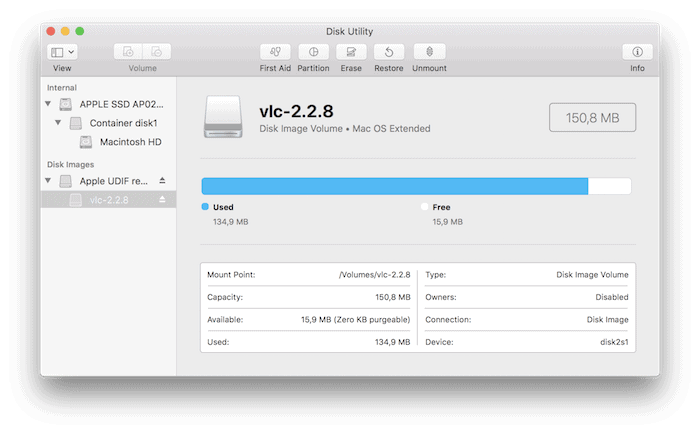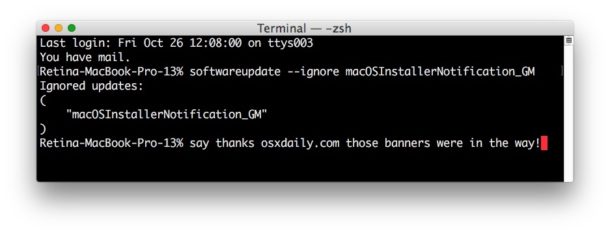Delete Temporarty Software Update File Macos
Benefits of deleting temporary files
Download Automatically Delete Temporary Files Software - An intuitive application that helps you automatically delete temporary files, items stored in the Recycle Bin, and most recently used files. Apple's Mac App Store, which was introduced in OS X 10.6.6, has become Apple's central location for distributing new software as well as managing updates to the OS and purchased applications.
Macos Delete Key
- Mar 29, 2020 Just click Delete Files to make sure that all files will remove successfully. Until it will not finish, don’t close the process window or shutting down your system. Until it will not finish, don’t close the process window or shutting down your system.
- IOS Temporarily remove apps to install Software Update. Insufficient storage space is a very common issue for iPhone users. The majority of Apple smartphones sold worldwide are the basic storage models. 16GB space is very low nowadays, considering that iOS alone needs a few gigabytes to deploy.
- Aug 17, 2018 If for whatever reason you want to clear out the temporary items files on a Mac, simply reboot the computer to target system level temp files, while user level caches and temp files can be manually cleaned out if necessary for some reason or another.
Macos Delete Application
Storing temporary and cache files, alongside everything else stored in your Mac, takes up space that could be put to better use. Depending on how many apps you use on a regular basis, you could be storing dozens - even hundreds - of cache and temporary files without realizing it, all incrementally slowing your Mac down.
Cache and temporary files can include everything from web browser cache and history, including cookies and passwords, to messaging cache folders, partially completed downloads, app temp files and folders, and so much more that is taking up space on your Mac.
Types of temporary files:
Automatic software update mac not working. Oct 30, 2016 Autoupdate is not working on my Mac 10.11.6. I get a notice that I need to update Excel, Power Point, Word and OneNote to 15.27.0, and Office 2011. Sep 10, 2019 Install System data file and Security updates Select the option you wish to required and click OK button. Mostly the update happens on the midnight or when the Mac is not in use. But the active internet connection is required for the updates. On your Mac, choose Apple menu System Preferences, then click Software Update. Open Software Update preferences for me. To automatically install macOS updates, select “Automatically keep my Mac up to date.” To set advanced update options, click Advanced, then do any of the following: To have your Mac check for updates automatically, select “Check for updates.”. Oct 18, 2019 Open the App Store app on your Mac. Click Updates in the App Store toolbar. Use the Update buttons to download and install any updates listed. When the App Store shows no more updates, the installed version of macOS and all of its apps are up to date. That includes Safari, iTunes, iBooks, Messages, Mail, Calendar, Photos, and FaceTime.
- browser cookies
- outdated system logs
- application cache
- intermediate document versions
Why do browsers collect cache?
Delete Temporary Software Update File Macos Windows 10

Most web browsers will only try to hold onto a limited amount of cache data and cookies. This helps your browser run faster when loading a web page that you’ve visited before. But it won’t hold onto everything. Most will try and self-clean this data after a period of time.
And apps, also hold onto as much as they need, and will sooner or later, try and clear out that data. Automated cache clearing doesn't always work and sometimes when an app or web browser isn’t working properly - or if you've fallen victim to malware or adware - a direct intervention is needed to clear out temporary files and cache data to get an app, browser or other application to work as it should.
The old caches may cause software glitches and compatibility issues.
Delete temporary files with CleanMyMac
Clearing out unnecessary temporary and cache files will increase the amount of hard drive space available, and it should improve the overall performance and speed of your Mac. You can do this one of two ways: manually — which we cover below — or using a time-saving tool, such as CleanMyMac X.
Get a free version of CleanMyMac — a link to free download
According to the developer, this app removes up to 74 GB of junk on average Mac. Most of it is system junk, in other words, temporary files and caches. If you are overloaded with temporary files and too much cache data, it will highlight this and you can safely delete everything, saving you time and space. Another way to clear out cache files and data is to go through your files manually. Here is how you do that.
How to delete temporary files manually
Before you begin, always back up your Mac. Whether you use Time Machine, iCloud, or a third-party hard drive or cloud-based storage system, make sure you’ve got everything backed up.
There are 4 main types of caches you'll encounter on your Mac:
Here is how to clear temporary files from a Mac:
- Quit or close any open and active apps. To make sure this is done, Force Quit anything that hasn't closed properly. Anything that needs to be closed that way might benefit from a cache clear out.
- Go to the Finder in macOS
- If you are using Sierra or a more recent OS, hold down the SHIFT key. Or for those using an older macOS, press down the OPTION or ALT key, and pull down the Go menu in Finder.
- Choose Library from the options presented in the Go menu
- Once you’ve got access to Library, go to the Caches folder
- Now this will show you the full range of cache and temporary files that are being stored on your Mac. Be certain which ones you want/need to delete before sending them to the Trash.
- To send cache folders to the Trash, either right-click and select Move to Trash, or drag and drop them into the Trash.
- Empty the Trash — the same way you would when removing any other files - to clear them out of your Mac.
Typical cache file looks like this: “com.apple.iTunes”.
Deleting browser cache

Unless you are either deleting everything, with some apps you can make these same changes in settings. In every web browser, you can clear the cache, cookies, saved passwords and browser history.
How to empty the cache in Safari:
Other web-based apps also have settings that give you control over the cache and cookies, so to avoid deleting everything, you might want to go to the specific app containing the data and clearing it out that way.
Another way to safely delete temporary files, cookies and cache is to Restart your Mac. If you keep it running and in sleep mode for days or weeks at a time, there are a lot of automatic maintenance systems that can’t operate until you restart or shut down your Mac then start it up again. Restarting your Mac is doing it a big favor and should help it run smoother
Locate hidden temporary folders with CleanMyMac
Did you know, there is a way to peek under the hood of your Mac? The tool we've just told you about, CleanMyMac X has an instrument for viewing the inner parts of your macOS. It's called Space Lens. It looks like this:
These 'bubbles' represent folders of different size. Here you can explore the Library and other distant parts of your computer.
Get the app here for free (a link to the developer's site)
Once you install the app, click the Space Lens tab in the sidebar.
Explore! This tool is really fun.
The outdated system files may hold back the performance of any Mac, even the most powerful models. And that's why Mac cleaning software exists. Either you choose a manual or automatic cleanup, your Mac will thank you for it. Hope you've learned something helpful today. Come back for more Apple/Mac tips.
Dec 18, 2019 Affinity Photo is a past Apple Mac App of the Year Winner and the professional tool has everything you’d expect in a premium photo-editing product. Use it to edit and retouch images as well as create multi-layer pieces. The professional corrections and adjustments tools rival any other app out there and it has a great noise-reduction filter. Mar 07, 2020 Paid Photoshop Alternatives; Free Photoshop Alternatives (Windows, macOS and Linux) 1. Krita is a free tool like Photoshop that is almost as feature rich in the options it offers as Photoshop is. It also happens to be one of the tools that are highly recommended by people in online forums about photo editing and creative editing. Mac users who are searching for image editing software need to look no further than Acorn. It is a cost-effective solution if you do not have access to Photoshop. What makes it so great is that it is quick, enjoyable to use and offers useful features. Apr 21, 2020 While Adobe charges a fee to use its main Photoshop software, the company does offer free image editing tools in the form of the Photoshop Express application. Available for Android, iOS and Windows tablets and phones, this surprisingly capable app allows you to enhance and tweak your photos in a number of ways. Best photoshop software for mac. Jun 23, 2020 The wide array of features Adobe Photoshop’s offers will keep this tool the professional’s choice, but the rest of us have a superb selection of free and cheap programs like photoshop. As an instance, few photo editing software like Photoshop supports.